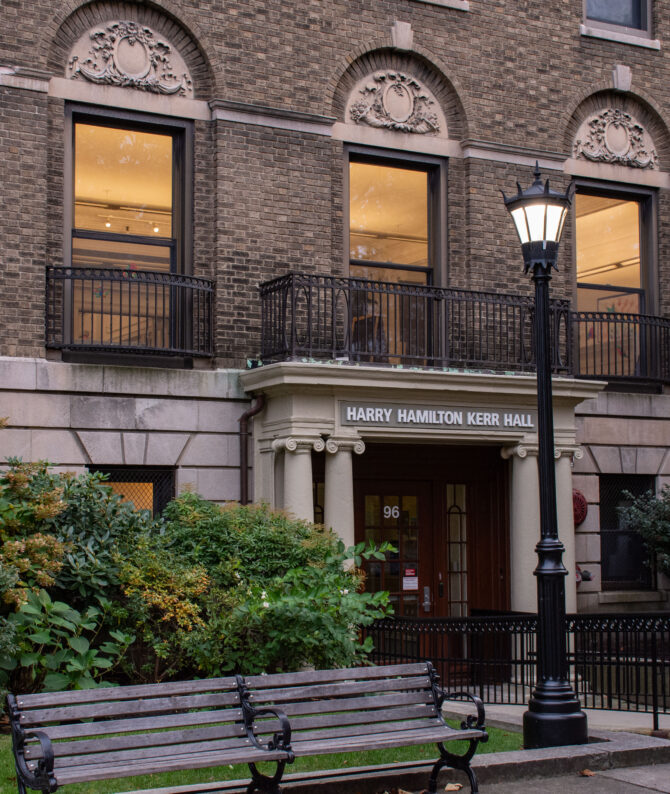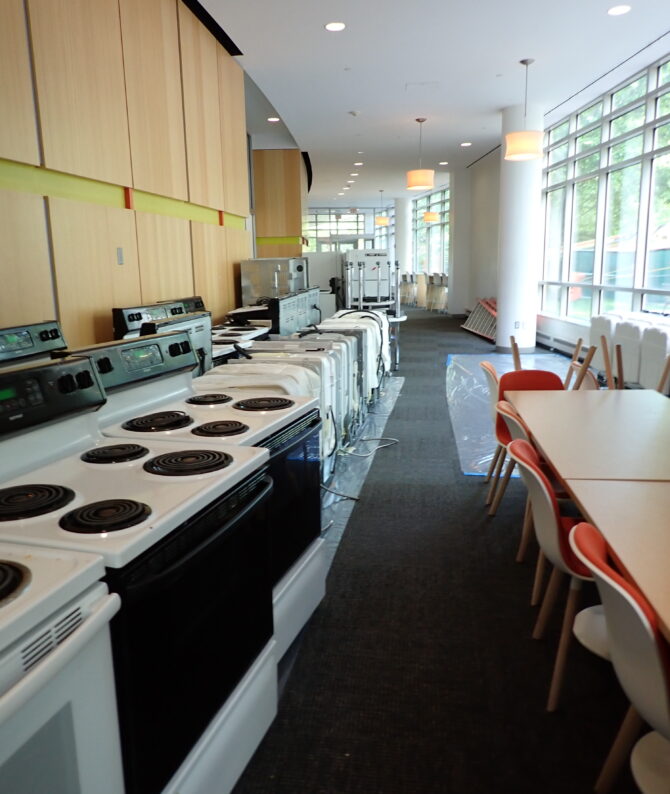Building Stronger, Sustainable Communities: Placemaking and Sustainability in NU’s Global University System

With thirteen campuses across North America and Europe, Northeastern University’s global university system provides students with opportunities to explore the social, cultural, and political contexts of different regions. As our global community grows, Northeastern designers are working to fit out campus buildings with modern sustainable features while also honoring the history and character of each individual city.
Lauren Hunt, a campus designer for Campus Planning and Real Estate at Northeastern University, explains that designs for each of Northeastern’s campus locations are intended to maintain a sense of individuality and capture the distinct character of the surrounding community. “In a lot of ways,” says Hunt, “we try to stray away from standards [across all campuses] because you want to feel the energy of what city you’re in. We don’t want students to walk onto a regional Northeastern campus and feel as though this could be any other campus.”
Hunt refers to a community-building approach known as placemaking, in which members of a community can create quality places where people want to live, work, play, and learn by upholding the physical, cultural, and social identities that define the space. This approach can strengthen community bonds and intimately connect individuals to the places in their lives.
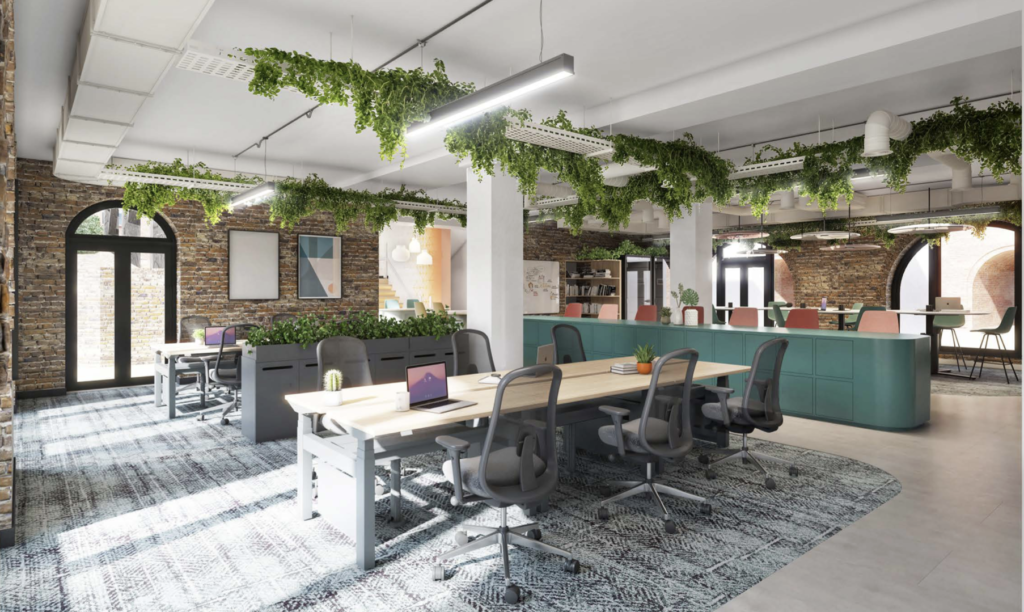
For example, “one [question] that is a huge focus in our Seattle campus right now is, ‘Is this design “Pacific Northwest” enough? Does it include enough natural elements like timber or pine trees?’ They’re quintessential to that part of the country. We try to implement elements like that into our design to make it feel more vernacular to the space,” Hunt explains.
“Alternatively, the Charlotte campus is in a very trendy neighborhood, so we’ve made design choices that are modern chic. Overall, the aesthetic is different from campus to campus because you want it to match the atmosphere of that city, of that neighborhood.”
Campus designers can also emphasize the distinctive qualities of a community – and help students feel more integrated within it – by simply increasing accessibility to views of surrounding neighborhoods. “We try to maintain sight lines throughout our campuses,” says Hunt. “So a lot of glass, an emphasis on blending spaces together, always having access to an exterior view.”
While these practices are tailored toward Northeastern students, campus designers like Hunt are also working to engage members of local communities within the design process itself. “We like to source locally. For example, we do a lot of murals on campus, and we try to highlight people who are local to the area. On some of our campuses, we choose local Indigenous artists to pay homage to the land that we’re on,” says Hunt.
Sustainability is also a key factor of consideration for Northeastern campus designers, and there are many different approaches that can be applied across campuses to achieve Northeastern’s sustainability goals. However, the process of selecting specific sustainable fit-outs for the different global campus buildings can still be varied and challenging, as planning teams must often work within the bounds of the existing infrastructure.
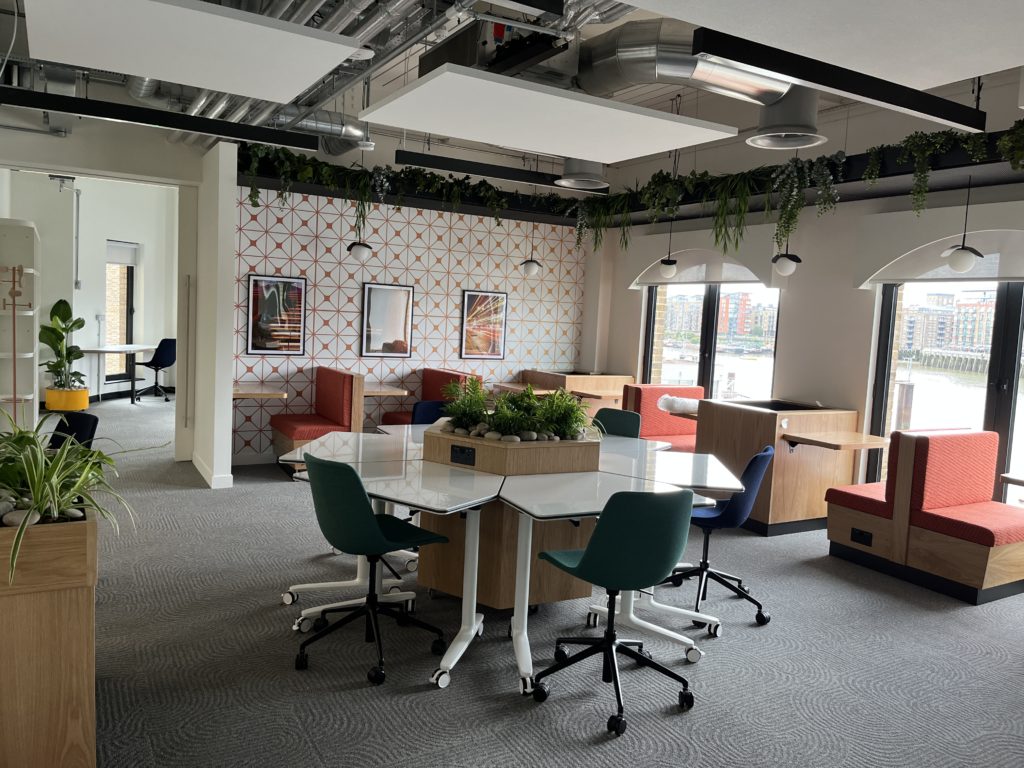 |
 |
“We can’t just rip out all the HVAC [heating, ventilation, and air conditioning] in the entire building and make a path to building [more sustainable infrastructure],” says Hunt. But there are a wide variety of ways in which Hunt and other campus designers have incorporated sustainable features and practices.
“At a minimum, [we] match the level of LEED of the building we’re in. So, if the building is LEED Gold, our fit-out will be LEED Gold,” says Hunt.
LEED certification, standing for Leadership in Energy and Environmental Design, is a globally recognized framework for improving energy efficiency, reducing carbon emissions, and creating healthy living spaces. Certifications are awarded through a point system addressing everything from carbon and water to transportation and health, with four levels of achievement: Certified, Silver, Gold, and Platinum. Northeastern currently has nine LEED certified building projects in Massachusetts.
Campus Planning and Design also maintains sustainable building design requirements through the Northeastern University Design Standards. The goals, strategies, and procedures for sustainable design set within this document aim to reduce the impact of campus buildings on the environment by using energy and environmental resources efficiently, while also providing for the present and future needs of the University.
A key component within these standards is the selection of materials for furniture, carpeting, floor tiles, ceiling tiles, and other components of building design. “We source more sustainably and choose fabrics that have been recycled,” Hunt explains, to reduce the potential carbon emissions associated with the production and transportation of such materials. When possible, Northeastern also salvages existing furniture and equipment for potential re-use in other projects.
| Hunt also highlights a feature of building design that many of us may take for granted: biophilia. Originating from the Greek bio – , meaning “life,” and –philia, meaning “love of,” biophilia refers to an innate tendency within humans to seek connections with nature and other forms of life (“a love of life or living things”). Studies indicate our environment plays a large role in our overall health and well-being. Maintaining a connection with nature has been shown to reduce stress, improve cognitive performance, and positively influence our attitudes and emotions. | 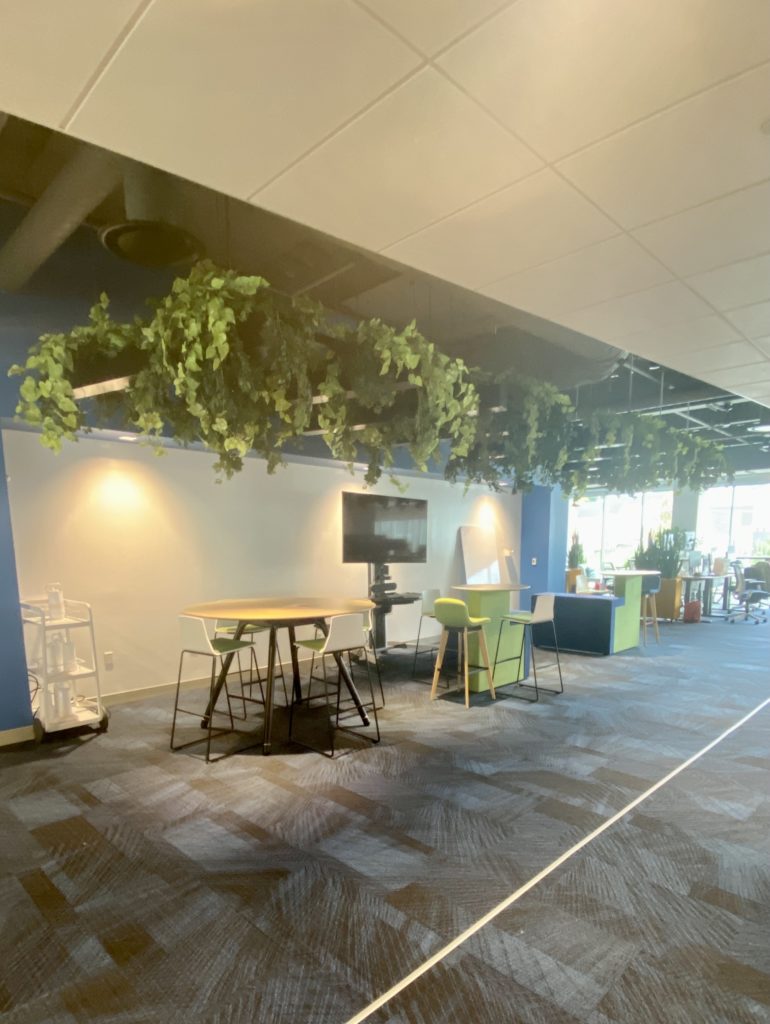 |
We can connect with nature in a variety of ways, but one method that Hunt highlights as part of their campus designs is the incorporation of plant life, to maintain a visual connection with nature. “I think for the average person, they might not even consciously recognize how much biophilia enhances space and enhances your life,” Hunt says. “Not only do plants have air quality benefits, [they also] soften spaces a lot. I’ve visited campuses before we’ve had plants delivered and they can come across as somewhat sterile. Plants are a great way to add some warmth, some life.”
Greenery can also serve functional purposes within campus spaces. “We also use [plants] a lot as space dividers,” Hunt explains. “We’ll have tall snake plants in between couches, and it separates areas. Another thing we’ll do is hang a trellis from the ceiling and have plants cascading down, which is another way to define space. I think it adds coziness really. And then from a sustainability point of view, you can’t really go wrong with access to natural elements.”
As Northeastern’s global university system continues to grow, the work of campus designers will play a key role in ensuring students are engaged and fully immersed within their communities, while also maintaining key standards of sustainability within the global sphere.
Written by Daria Healey, October 24th, 2022

